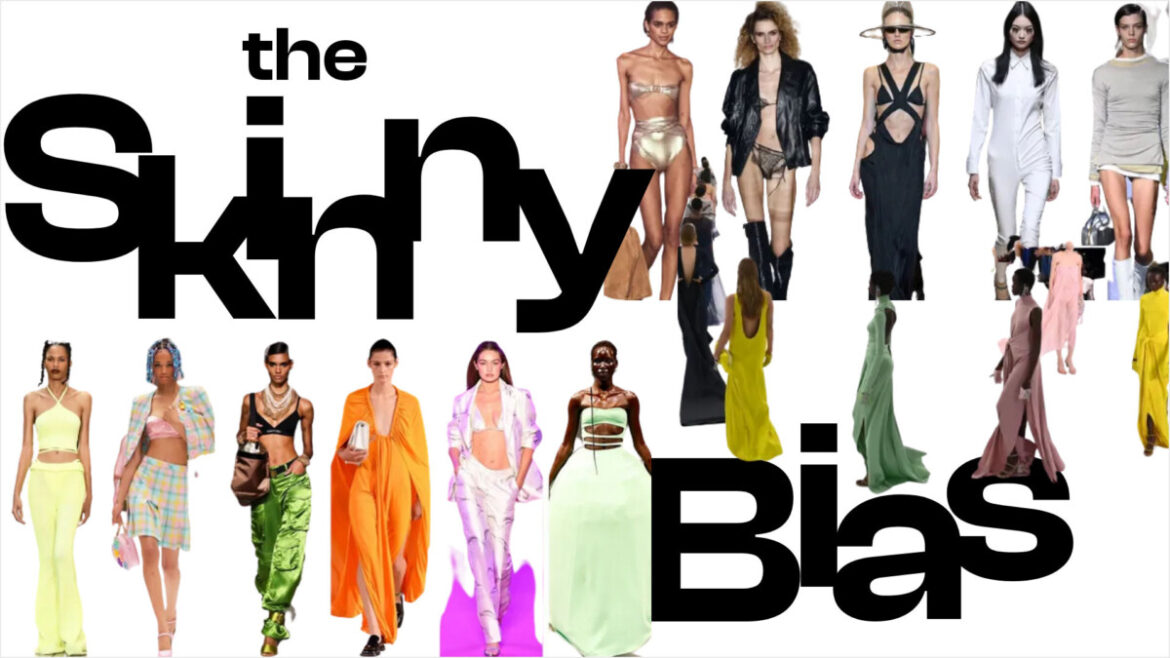Bridget Flatow, Reporter
BFlatowCourant
As you go through your week, pause on the fashion ads that you come across. Ask yourself, What type of body is presented in the advertisements? Am I subconsciously being told what is and what is not beautiful? What do I say to myself when I look at these? Do I want that shirt or do I want that body type?
The fashion industry has historically always been synonymous with the idea of “thinness.” The idealized images of slim bodies that flood our media send the clear message: thin is beautiful, and anything else is not good enough. Many companies use skinnier models to advertise and wear their clothing because this presents an aspirational image to their consumers. They want people to buy their clothes because with these clothes they too, can have perfectly symmetrical faces, poreless skin and perfectly toned bodies.
Thus skinny is presented as beautiful, stylish and an aspirational norm. This ideology, known as the “skinny bias” by many, associates thinness with attractiveness and health, which can be detrimental to many women and men who don’t fit these beauty standards.
One of the key challenges in moving away from the skinny bias is the fact that the fashion industry is, fundamentally, a business. And for many years, the business model has been built around a very specific idea of what is beautiful and marketable. Breaking away from this model will require a new way of thinking about beauty and a willingness to take risks and challenge the status quo.
The question truly becomes, does the fashion industry have the power to transform this inherent bias, or do we as a society have to push for more inclusion and the fashion industry will follow?
The spring ‘23 New York Fashion Week has exemplified this ideology, as plus-size models were not included in shows as much as in previous fashion weeks. Although some have said this dip in plus-size models has been because of the increase in mid-sized models, others credit this shift to the rising Y-2K trends.
The trend of the season has been models with skelletal stomachs, visible ribs and sunken cheeks on catwalks, exemplifying how brands will market human bodies rather than their actual clothing. There are three huge problems with these images. One, girls, do you really want to aspire to something that looks so unhealthy? Two, if this is supposed to be attractive, find me one person who really finds this attractive. And last, this is an example of how the industry is marketing un-health, rather than clothing. Attractiveness is a broad topic and I’m not going to go further into it but it’s important for students to ask themselves what they find attractive rather than what the fashion industry is telling them is attractive. Next time you are buying new Urban Outfitters jeans or see an influencer showing off her Brandy Melville top, ask yourself if this brand is marketing the body or the actual clothing. Create your own narrative around beauty that celebrates health, diversity and inclusivity, rather than listening to what you have been told your whole life from the fashion industry.
The revival of Y2K dressing, which puts bodies under blatant scrutiny, has brought size zero back into fashion. Kim Kardashian’s weight loss for the Met Gala and Karl Lagerfeld’s recognition at the Met Gala despite his blatant fatphobia, are just some examples of signals that indicate the return of the size zero trend and the industry’s ignorance regarding the power they hold about young women’s body image.
During the Coperni show at Paris Fashion Week, Bella Hadid wore a spray-on fabric that felt like a reflection of the industry’s stubborn obsession with extreme thinness. While the purpose was to showcase the sustainable qualities of the materials, critics feel the focus seemed to be more on showcasing her body. This raises the question of whether the fashion industry views body positivity and inclusivity as mere passing trends, and whether we can overcome the prevalent influence of the “skinny bias.”
Thankfully, despite the trends we have been seeing, there are signs that some brands in the fashion industry are starting to move away from the “skinny bias.” Brands such as Summersalt and Girlfriend Collection along with luxury brands such as Vitto and Østlie are featuring more and more models of different sizes and shapes. However, there is still a long way to go and it will take a concerted effort from everyone involved in the industry and within society to make lasting changes.
One way to challenge the “skinny bias” in fashion is to support and promote brands that are already doing this work. Consumers can choose to spend their money on brands that feature models of different sizes and shapes, which can send a powerful message to the fashion industry. Similarly, industry leaders should work to create more opportunities for models of different sizes and prioritize diversity and inclusion throughout brand marketing.
Another critical step is to promote body positivity and acceptance in our broader culture. We must work to shift our collective mindset away from the idea that there is only one acceptable body type, and instead celebrate the uniqueness of all bodies. One small step that leaves a great impact is changing your mindset about the ideal body and recognizing marketing that is promoting a body rather than clothing.




